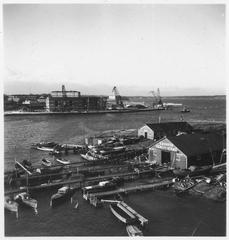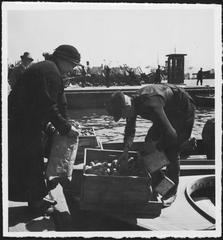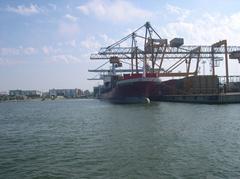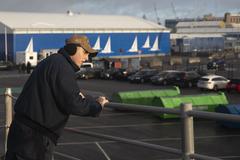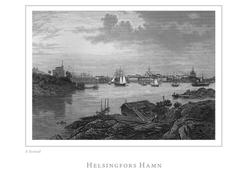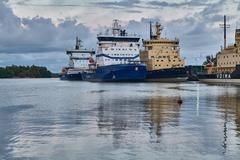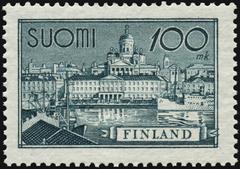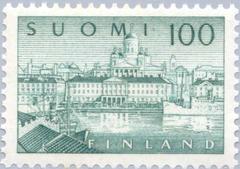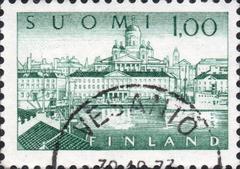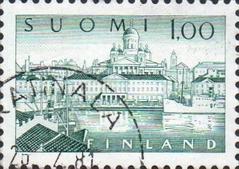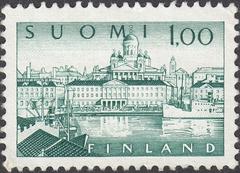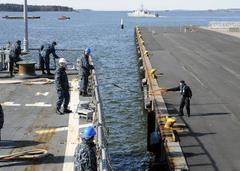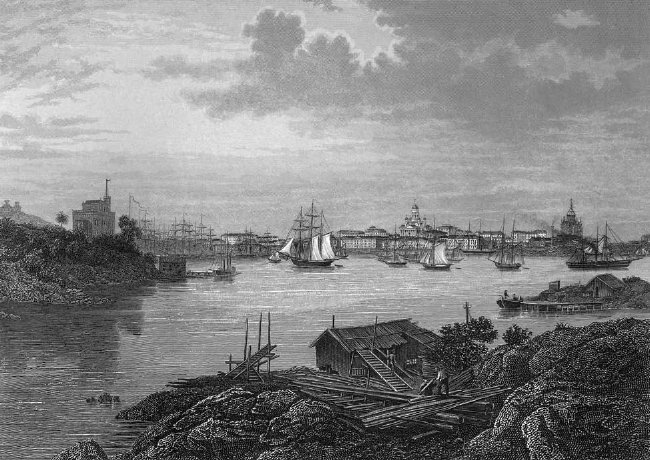
Port of Helsinki Visiting Hours, Tickets, and Complete Travel Guide
Date: 14/06/2025
Introduction
Nestled on Finland’s southern coast, the Port of Helsinki is a thriving maritime gateway that seamlessly connects the country to the Baltic Sea and beyond. As one of Europe’s busiest passenger ports and Finland’s principal cargo hub, it serves millions of travelers each year, linking notable capitals like Tallinn and Stockholm through frequent ferry routes. More than a logistical center, the port offers visitors a fascinating blend of maritime history, modern infrastructure, and proximity to Helsinki’s most iconic sites, including the UNESCO-listed Suomenlinna Sea Fortress, Helsinki Cathedral, and the vibrant Market Square (Port of Helsinki, MyHelsinki, EME Outlook).
Founded in the mid-16th century and relocated to its current strategic location in the 17th century, the port has grown alongside Helsinki itself. Its accessibility is enhanced by excellent public transport, modern terminals, and a strong commitment to sustainability and accessibility for all visitors (Tourist Secrets, Daily Finland).
This guide provides all you need to explore the Port of Helsinki with confidence—covering terminal visiting hours, ticketing details, nearby attractions, and travel tips. Whether you’re embarking on a cruise, planning a day trip to Suomenlinna, or soaking in the harbor atmosphere, this resource ensures a memorable and seamless experience. For real-time schedules and insider tips, download the Audiala app (Audiala app).
Historical Overview
Early Settlement and Founding
The region around the Port of Helsinki has been inhabited for thousands of years, with archaeological evidence dating back 7,000 years (MyHelsinki). Helsinki was officially founded in 1550 by Swedish King Gustav I as a trading post to rival Tallinn. The original settlement at the Vantaa River mouth was relocated to its current position in 1640 for better maritime access (Wikipedia: History of Helsinki).
Maritime Significance and Suomenlinna
Helsinki’s importance grew in the 18th century with the construction of the Suomenlinna sea fortress beginning in 1748. Now a UNESCO World Heritage Site, Suomenlinna was built to defend against Russian advances and remains a highlight of the city’s maritime legacy (Wikipedia: History of Helsinki, MyHelsinki).
Russian Rule and Capital Status
After the Finnish War and the Treaty of Fredrikshamn (1809), Helsinki became the capital of the Grand Duchy of Finland under Russian rule. This spurred rapid urban development, with the port central to trade and administration (Faraway Worlds).
Modernization
The 19th and 20th centuries saw Helsinki and its port evolve into Finland’s economic and cultural center. The port expanded alongside industrial growth, shipbuilding, and international commerce, with significant upgrades following the 1952 Olympics and the advent of the Helsinki Metro (MyHelsinki).
Economic and Logistical Importance
Today, the Port of Helsinki is Finland’s principal maritime gateway, handling over 8 million passengers and upwards of 15 million tonnes of cargo annually (EME Outlook). Unitized cargo dominates, while ferry routes to Tallinn and Stockholm drive passenger traffic. The Helsinki-Tallinn line alone serves more than nine million passengers each year.
Revenue is split evenly between passenger and cargo traffic, with the port’s operations vital to both the national economy and the wider Baltic region.
Port Terminals, Facilities, and Services
The port manages eight harbors: six dedicated to ferries and cruises, and two for general cargo (EME Outlook). Key passenger terminals include:
- West Harbour (Jätkäsaari): Main terminal for ferries to Tallinn.
- South Harbour: Serves smaller cruise vessels.
- Katajanokka and Hernesaari: Additional cruise and ferry terminals (Travel Must Dos).
Terminals offer:
- 24/7 access for ticketed passengers, with multilingual staff and digital departure boards.
- Shops and cafés (6:00 AM–10:00 PM).
- Free Wi-Fi, luggage storage, ATMs, and currency exchange.
- Accessible facilities: step-free access, elevators, and assistance services (Tourist Secrets).
Visiting Hours and Ticketing Information
- Passenger Terminals: Open 24/7 for ticketed passengers; shops and cafés typically 6:00 AM–10:00 PM.
- Port Tours: Offered seasonally—check the official site or tour operators for schedules and prices.
- Ferry Tickets: Available online, at port terminals, or through local agencies. Advance booking is recommended in peak season.
- Suomenlinna Ferry: Ferries run from 5:30 AM to midnight. Tickets (€5–7 round trip) can be purchased at Market Square, online, or via the HSL app.
Transportation Connections
Helsinki’s excellent public transport system connects the port to the city and beyond:
- Trams: Lines 6T and 7 (West Harbour); 2 and 4 (South Harbour and Katajanokka) (Adventour Begins).
- Buses and Taxis: Readily available outside each terminal.
- Rail: Central Railway Station is a short tram ride away.
- Airport Transfers: Helsinki-Vantaa Airport is 30–40 minutes by taxi, shuttle, or train.
Sustainability and Future Developments
The Port of Helsinki is committed to sustainability, targeting carbon neutrality by 2025 and offering onshore power supply for docked vessels (EME Outlook). Ongoing projects include the demolition of the old West Harbour T1 and the construction of a new terminal by 2032 (Daily Finland), as well as continuous investments in digitalization and smart port solutions (City of Helsinki).
Top Attractions Near the Port
Market Square (Kauppatori) & Old Market Hall
A lively marketplace for fresh produce, local delicacies, and crafts. Old Market Hall is open Mon–Sat, 8:00 AM–6:00 PM (Guide to Helsinki).
Helsinki Cathedral & Senate Square
10 minutes on foot from the port, Helsinki Cathedral is open daily 9:00 AM–6:00 PM. Senate Square is surrounded by historic architecture (Not About the Miles).
Suomenlinna Sea Fortress
UNESCO-listed fortress accessible by ferry from Market Square. Ferries run frequently; museum open daily 10:00 AM–5:00 PM (My Global Viewpoint).
Uspenski Cathedral
Located on Katajanokka peninsula, open daily 9:00 AM–5:00 PM. Free entry; accessible and offers fantastic city views.
Esplanadi Park, Design District, and More
Scenic boulevard with shops and cafés, and a creative hub featuring the Design Museum and boutiques (Not About the Miles).
Temppeliaukio (Rock) Church
Carved into granite, open 10:00 AM–5:00 PM, accessible by tram (Cruisability).
Practical Tips for Visitors
- Weather: June is mild (11–17°C/51–63°F) with occasional showers—pack a light jacket (Wanderlog).
- Currency: Euro (€); ATMs and exchanges available.
- Language: Finnish, Swedish, and English widely spoken.
- Wi-Fi: Free in all terminals.
- Luggage Storage: Available at terminals.
- Booking: High season starts in June—book accommodation, ferries, and tours in advance (Global Highlights).
Accessibility
All main terminals and most attractions are wheelchair-friendly, with ramps, elevators, and accessible public transport (Tourist Secrets). Assistance services are available and can be pre-booked.
Safety and Security
The port prioritizes safety with visible security, surveillance, and clear emergency procedures (Port of Helsinki Annual Report 2023). Travelers are encouraged to keep belongings secure and follow all posted guidelines.
Frequently Asked Questions (FAQ)
What are the Port of Helsinki visiting hours?
Terminals operate 24/7; shops and cafés 6:00 AM–10:00 PM. Check operator websites for specific times.
How do I buy ferry or cruise tickets?
Tickets are sold online, at terminal counters, or through agencies. Advance booking is recommended during high season.
Is the port accessible for disabled visitors?
Yes, with step-free access, elevators, and assistance services.
Are guided tours available?
Seasonal guided tours cover the port’s history and sustainability efforts. Check online for details.
What historical sites are near the port?
Market Square, Suomenlinna, Helsinki Cathedral, the Design District, and Seurasaari Open-Air Museum.
Final Tips and Summary
The Port of Helsinki is not just a transit hub—it’s a dynamic cultural and historical center that embodies Finland’s maritime heritage and modern innovation. With state-of-the-art facilities, accessibility, and a wealth of nearby attractions, the port is the perfect starting point for exploring Helsinki and the Baltic region. Book tickets in advance, use public transport for convenient city access, and make the most of Helsinki’s rich offerings with the Audiala app.
Sources and Official Links
- Port of Helsinki
- MyHelsinki
- EME Outlook
- Daily Finland
- Tourist Secrets
- City of Helsinki
- Guide to Helsinki
- Not About the Miles
- My Global Viewpoint
- Cruisability
- Wanderlog
- Global Highlights
- Adventour Begins
- Port of Helsinki Annual Report 2023

